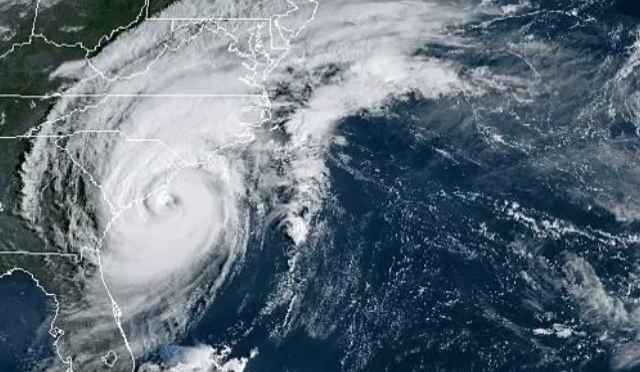Hurricane Sally takes aim at U.S. Alabama-Florida border area
Hurricane Sally on Wednesday made its final, grinding approach to the U.S. Gulf Coast, inching toward a daybreak landfall as an upgraded Category Two storm after winds intensified overnight. Winds were clocked at 100 miles per hour (160 km per hour), able to cause extensive damage, according to the five-step Saffir-Simpson scale.

- Country:
- United States
Hurricane Sally on Wednesday made its final, grinding approach to the U.S. Gulf Coast, inching toward a daybreak landfall as an upgraded Category Two storm after winds intensified overnight.
Winds were clocked at 100 miles per hour (160 km per hour), able to cause extensive damage, according to the five-step Saffir-Simpson scale. It also poses the risk of "life-threatening flash flooding" with more than 2 feet (60 cm) of rain landing on some areas as it creeps inland, the National Hurricane Center said. Sally was 65 miles (105 km) southeast of Mobile, Alabama, early Wednesday and creeping toward the Alabama-Florida border at two mph (4 kph). Its winds and rains will stretch from Mississippi to the Florida Panhandle, the NHC said.
Officials across the South had called on residents of low-lying areas to shelter away from the winds and rain. But for some, Hurricane Sally's slow approach brought a chance to relive childhood memories of storms past, and to witness the power of nature first hand. Thomas Harms braved the wind and rains on Tuesday to watch the waves crash into the Fairhope Municipal Pier, and reminisced about past storms. As a child, he went with his grandfather to see storms arrive, and he did the same on Tuesday for his son.
"It kind of takes a little bit of the fear out of it and also help you understand the dangers of it too," said Harms. "I've been kind of passing that on to my son in doing the same thing." Others joined him on the pier to catch a glimpse of what was to come.
"We were at home saying 'we're bored', so I was like 'how 'bout we go to Fairhope and see how bad it is out there.' As you see, it's pretty bad," said Warren Babb. Damage from Sally is expected to reach $2 billion to $3 billion, said Chuck Watson of Enki Research, which tracks tropical storms and models the cost of their damage. That estimate could rise if the heaviest rainfall happens over land, Watson said.
Ports, schools and businesses were closed along the coast as Sally churned. As the storm track shifted east, ports along the Mississippi River were reopened to travel on Wednesday. But they remained close to vessel traffic from Biloxi, Mississippi, to Pascagoula, Florida. Energy companies also shut more than a quarter of U.S. Gulf of Mexico offshore oil and gas production and some refiners halted or slowed operations.
(This story has not been edited by Devdiscourse staff and is auto-generated from a syndicated feed.)










